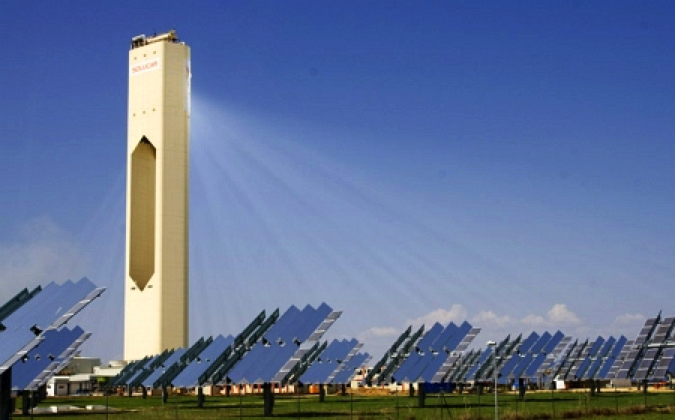Unlike linear concentrating systems (troughs), which reflect light onto a focal line, the central receiver systems send concentrated light onto a remote central receiver. A typical example of such a system is a solar power tower system, which consists of multiple tracking mirrors (heliostats) positioned in the field around a main external receiver installed on a tower. Such systems are capable of reaching of much higher levels of concentration than linear systems. Concentrated radiation is further used as heat to produce steam and convert it to electricity (like in a regular power plant), or the generated thermal energy can be stored in a molten salt storage.

Central receiver systems are typically large-scale plants that are usually built to power a steam cycle. The central position of the receiver offers a universal advantage to collect all energy at one location and save on transport networks. At the same time, the fixed position of such a central receiver results in a limitation of light collection: heliostats are always oriented at an angle to the direct beam, so the amount of energy collected is less compared to a parabolic concentrator. Therefore, to reach necessary efficiencies of light concentration, the size of the collecting field is increased, which brings into considerations such issues as land use, higher environmental impacts, and higher capital costs. Significant potential for developing large-scale central receiver solar plants is hence attributed to deserts and flat arid areas which have plenty of sunshine and lower land value with respect to other applications and industries.
The world’s current largest solar thermal power system is a power tower system named Ivanpah. Located in Southern California on the border with Nevada, Ivanpah has three main towers, nearly 2.5 million square meters of heliostats (mirrors), and can generate as much as 377MW of power under the right conditions. Worldwide, solar power tower systems have been used for decades to generate steam for both electricity generation and various industrial processes, with large-scale implementations in the tens of MW often for research purposes. Ivanpah is the first and only solar power tower plant in operation in the world that is larger than 20MW. While there are plans and ongoing construction in many countries around the world to build plants that are similar in size and even five times as large as the Ivanpah system, our global experience with such large solar power tower systems is very limited.
In the Ivanpah plant, there are several buildings near the base of the tower that contain the components of a typical steam electricity generation station. Once high-quality steam is generated in the tower and pumped down to the generation station at the base of the tower, the remaining components of the electricity generation system are no different than conventional electricity generation components.
Globally, some countries have much more history and subsequent experience with solar power towers. Spain and the USA are the two leading nations, with many other countries operating small power tower systems or currently developing plans to construct large (>10 MW) solar power tower electricity generation stations. The USA currently houses the largest solar power tower plant in the world and has the history of Solar One and Solar Two, which are currently decommissioned, but were 10 MW in size. Spain houses three active solar power tower systems larger than 10 MW with plans to build three more of that magnitude.
Further please proceed further to the following sources to learn about basic configurations and design of the central receiver solar power technology and some specifications of the heliostats and receivers utilized in known facilities of this type.
Reading Assignment
Book chapter: Vant-Hull, L.L., Central Tower Concentrating Solar Power (SCP), Chapter 8 in Concentrating Solar Power Technology. Principles, Developments, and Applications., Lovegrove K., and Stein W., Eds., Woodhead Publishing, 2012. pp. 240-281. (This reading material is available in Canvas e-reserve Module 10).
Duffie, J.A., and Beckman, W.A., Solar Engineering of Thermal Processes, Wiley and Sons, 2013, Chapter 17, Sections 17.4-17.5 (5 pages).
